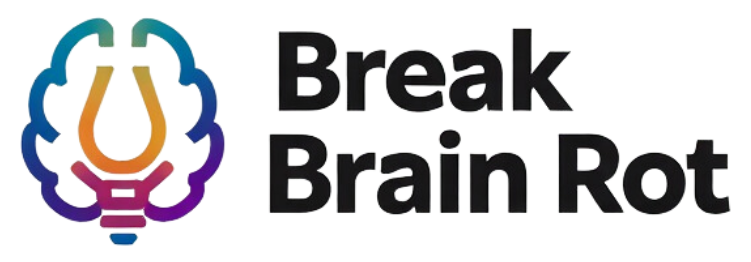You tell yourself it’s just a few minutes before bed. But one headline leads to another, and before you know it, hours have slipped away. If this sounds familiar, you may be experiencing compulsive doomscrolling—a modern habit that traps endless scrolling through negative news and distressing updates. This relentless search for information fuels anxiety, overwhelms your mind, and can lead to what experts now call Doomscrolling addiction. In this article, you’ll learn exactly why doomscrolling feels so hard to stop, what it does to your mental health, and practical strategies to step out of the cycle for good.
Table of Contents
- What Is Compulsive Doomscrolling?
- The Psychological and Emotional Impact of Doomscrolling Addiction
- Why We Can’t Stop Doomscrolling — The Science Behind the Habit
- How to Break Free from Compulsive Doomscrolling
- Healthy Digital Habits and Mindful Media Consumption
- FAQs on Compulsive Doomscrolling
- Conclusion
What Is Compulsive Doomscrolling?
Compulsive doomscrolling refers to the uncontrollable urge to scroll through endless streams of negative or distressing information, often on social media or news apps. Unlike casual browsing, this behavior involves a repetitive cycle that keeps users engaged long past intention. The term gained traction during major global events—the pandemic being a notable example—when people began searching excessively for updates in the hope of regaining control.
Definition and Origins
Doomscrolling became widely recognized around 2020, as constant news feeds exposed users to global crises 24/7. According to Psychology Today, this constant exposure triggers anxiety yet also reinforces a need to stay “informed,” trapping readers in a feedback loop of stress.
The Link Between Information Overload and Doomscrolling Addiction
Information overload is a key driver of Doomscrolling addiction. When digital platforms deliver a constant stream of alarming headlines, the brain perceives danger everywhere. This fuels worry and compels people to keep scrolling for reassurance—yet rarely find it. Check out our guide on managing social media overuse to understand this pattern in depth.
Recognizing the Signs
Common signs of compulsive doomscrolling include spending hours consuming negative content, feeling exhausted after online sessions, disrupted sleep, and difficulty focusing offline. Emotional red flags—such as irritability, hopelessness, or anxiety—often accompany this habit, signaling the need to reassess digital routines.

The Psychological and Emotional Impact of Doomscrolling Addiction
Mental Health Consequences
Several studies, including those by the American Psychological Association, reveal that constant exposure to negative content can heighten stress levels, worsen sleep patterns, and increase depressive symptoms. For individuals already struggling with anxiety, Doomscrolling addiction can intensify mental fatigue and emotional instability.
Emotional Exhaustion and Negativity Bias
Our brains naturally retain negative information more vividly than positive. This “negativity bias” perpetuates emotional exhaustion, making the world appear harsher than it is. Over time, compulsive doomscrolling shapes a distorted worldview, feeding hopelessness and disconnection from reality.
The Role of Social Media Algorithms
Algorithms are designed to maximize engagement, not mental health. Platforms push sensational headlines that evoke strong emotions—fear, outrage, or sadness—because such feelings drive clicks. By understanding how social media algorithms work, you can make more conscious choices about what you consume and where you spend your attention.
Why We Can’t Stop Doomscrolling — The Science Behind the Habit
Dopamine Loops and Reward Cycles
The human brain thrives on unpredictability. Each scroll or refresh brings a new post, supplying the same dopamine-driven reward cycle behind gambling or gaming. Harvard Health Publishing explains that this intermittent reinforcement keeps you glued to your feed—hoping the next scroll delivers something meaningful.
FOMO (Fear of Missing Out)
The fear of missing important updates further reinforces compulsive doomscrolling habits. You feel obligated to stay current, especially during crises. Over time, this fear morphs into dependency, blurring boundaries between genuine concern and digital compulsion.
The Brain’s Response to Uncertainty and Fear
When you’re uncertain or anxious, your brain craves information as a coping mechanism. However, continuous exposure to bad news escalates fear rather than soothes it. Understanding that this is a biological reflex—not a personal failing—can help you interrupt the doomscrolling cycle before it deepens.
How to Break Free from Compulsive Doomscrolling
Practical Steps to Reduce Doomscrolling Addiction
Breaking the cycle begins with setting intentional limits. Try scheduled digital breaks, turning off notifications, or using screen-time settings. Allocate specific “check-in” times for news or social media. Our guide on digital detox tips offers simple yet effective daily adjustments to regain control of your attention.
Building Awareness Through Mindfulness
Mindfulness helps you recognize when you’re spiraling into subconscious scrolling. Techniques such as deep breathing, meditation, or simply pausing before refreshing your feed can redirect awareness. Visit Mindful.org for guided exercises that strengthen your focus and presence.
Seeking Professional Support
If compulsive doomscrolling interferes with your mental health, consider speaking with a licensed therapist. Professionals who specialize in digital behavior or anxiety management can help develop personalized coping strategies and reduce the psychological pull of online negativity.
Healthy Digital Habits and Mindful Media Consumption
Setting Boundaries with Technology
Create phone-free periods throughout the day—like during meals or an hour before bed. Physical barriers (keeping your device in another room) can make these habits sustainable and foster better sleep and emotional equilibrium.
Curating Positive Online Spaces
Follow uplifting content—educational pages, humor, or wellness-centric creators. Unfollow sources that provoke anxiety or outrage. If you’re looking to design healthier feeds, visit our article on how to build positive online communities.
Replacing Doomscrolling with Productive Alternatives
Replace idle scrolling with nourishing habits: reading, exercising, journaling, or learning new skills offline. Even five minutes of stretching or connecting with someone face-to-face can significantly boost your mood and lessen the urge to scroll for relief.
Frequently Asked Questions
What causes compulsive doomscrolling, and how is it different from regular social media use?
Regular use involves intentional engagement, while compulsive doomscrolling stems from anxiety and a need for constant updates that ultimately increase stress rather than relieve it.
How long does it take to break free from Doomscrolling addiction?
It depends on usage patterns and consistency of new habits. With daily effort and accountability, meaningful improvement often appears within a few weeks.
Can technology tools help reduce compulsive doomscrolling habits?
Yes. Many smartphones and apps now include “focus” modes, screen-time trackers, or content filters that encourage balanced media consumption.
Why does compulsive doomscrolling increase anxiety?
Because your brain perceives each negative update as a new stress trigger, maintaining an elevated state of alertness that prevents relaxation.
Can mindfulness stop Doomscrolling addiction?
Mindfulness retrains your attention away from automatic behaviors. Over time, it helps you notice urges before acting on them, breaking the doomscrolling loop.
Conclusion
Compulsive doomscrolling can stealthily drain your energy, distort your perception, and heighten anxiety. By understanding its mechanisms and adopting mindful digital habits, you can reclaim control and nurture a healthier relationship with technology. Remember, awareness is the first step toward recovery. Start today—commit to one screen-free hour, follow positive sources, and use your attention to enrich, not exhaust, your mind. Break free from Doomscrolling addiction and rediscover peace in your offline moments.

